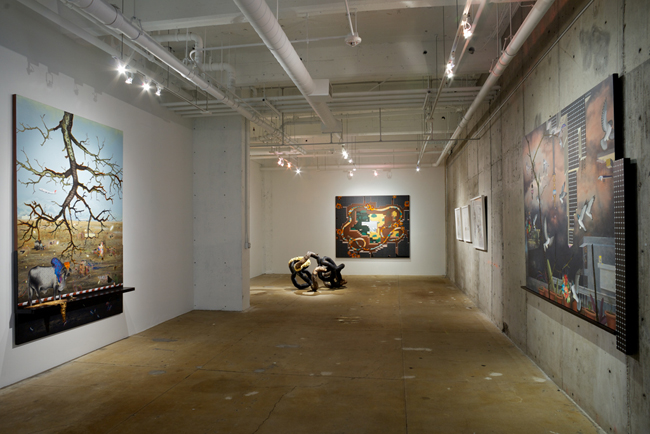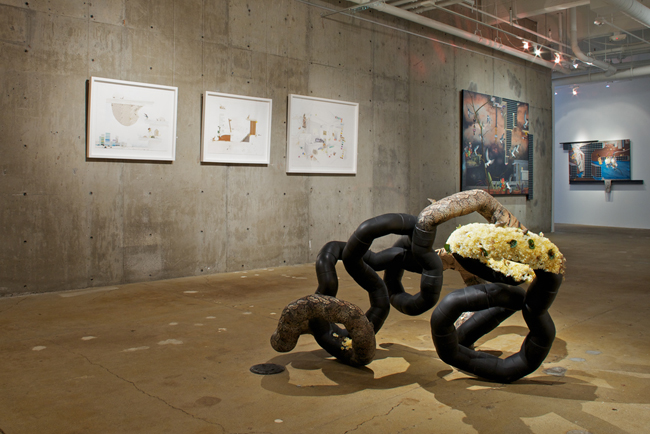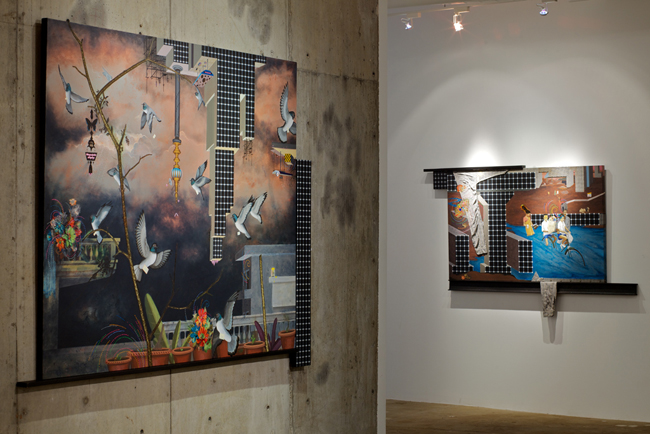May 3 — June 30, 2012



San Francisco — A pair of figures from antiquity seem modestly bound in love-making among floating foliage in the upper right corner of one of Jagannath Panda’s newest mixed media paintings; the rest of the canvas appears to be a remembrance and excavation of this pair of lovers, depicted as in a Kama Sutra illustration, but also a broad play on scale, toying with archeology and construction sites. In the modernity of the backhoes, there is a personal and cultural exploration of human history, both recorded and earlier. It is a bittersweet vision for the frenetic development of the quintessential Indian metropolis.
Cults of Serendipity is the American debut exhibition for New Delhi based artist Jagannath Panda. The Frey Norris presentation is timed to coincide with his appearance as part of the Asian Art Museum’s Phantoms of Asia: Contemporary Awakens the Past, the first show at the Asian to activate all floors and galleries of the museum with contemporary artwork (contact pr@asianart.org or 415.481.3711 for more information). His art focuses on serendipitous moments, juxtaposed locations and in some ways reflects his own observations of Gurgaon, a quickly developing suburb of New Delhi where the ancient is often overrun by new housing developments, warehouses and air-conditioned shopping malls. Here the ecosystem has little chance to keep pace, much less the networks for electricity and plumbing. As Peter Nagy, the artist’s New Delhi gallerist summarizes, “Panda’s mix of the mythological and the realistic points to the disoriented nature of Indian identity today, as it hopes to synthesize the traditional and the contemporary, the indigenous and the international, the imaginary and the actual.”
Panda’s work for Cults of Serendipity includes mixed media sculpture, works on paper and “paintings” incorporating great varieties of pastiched and patterned textiles, more a kind of layered collage, evocative of new cities built on ghost cities, whole civilizations layered on top of previous ones. Brocade fabrics imitate the skins of animals, feathers or foliage. Panda’s imagery plays with scale in deceptive ways; the edges of a massive patterned heart sinks a root into a pot, as though a fertile plant and simultaneously a sitter in a portrait, the patterning of its ventricles like so many options at a bazaar. The Ouroboros or world serpent appears in both two and three dimensions, swallowing its tail and coiling around sharp geometries that blend perspective on architectures seen from below, above and in profile. Ubiquitous pigeons seem similarly confused by these plays on orientation and flutter around unsure where to perch.
